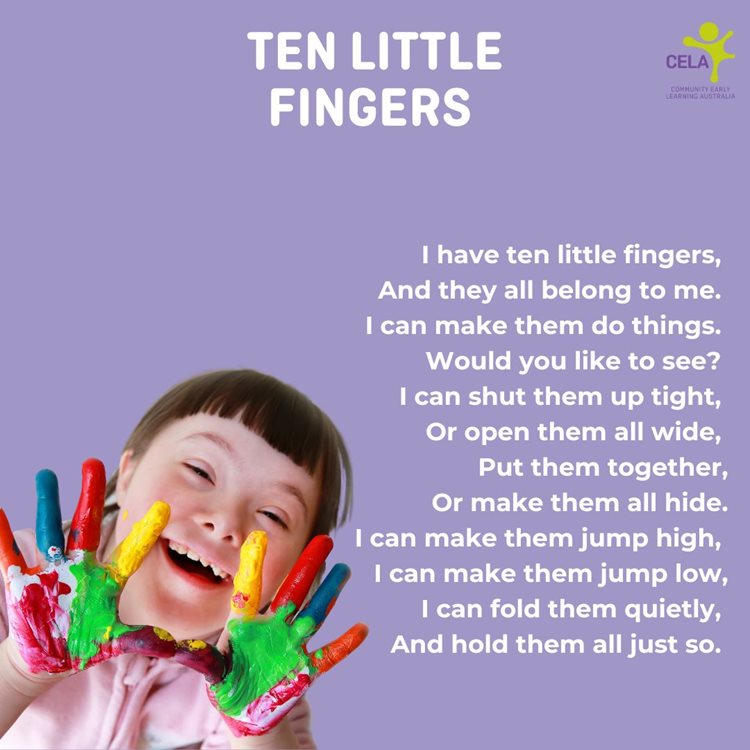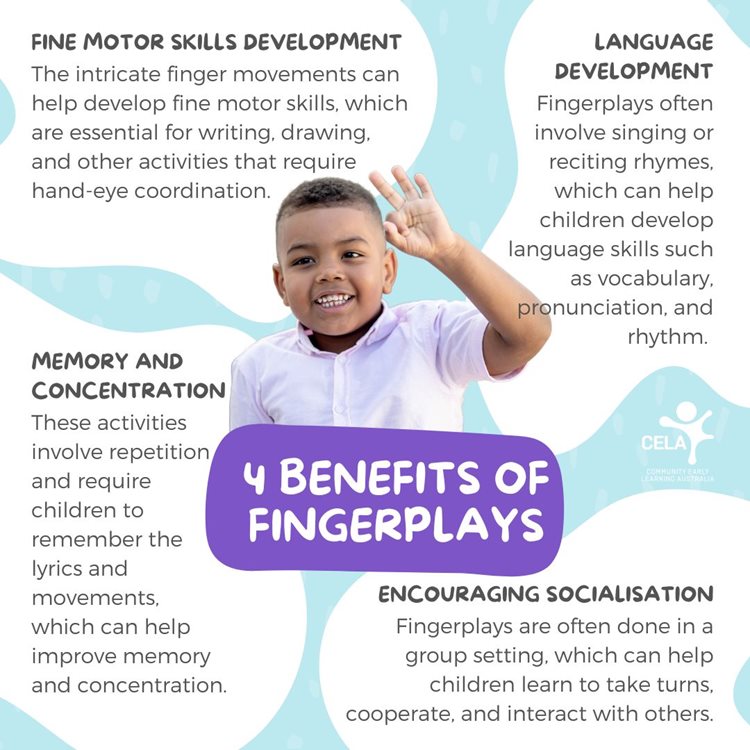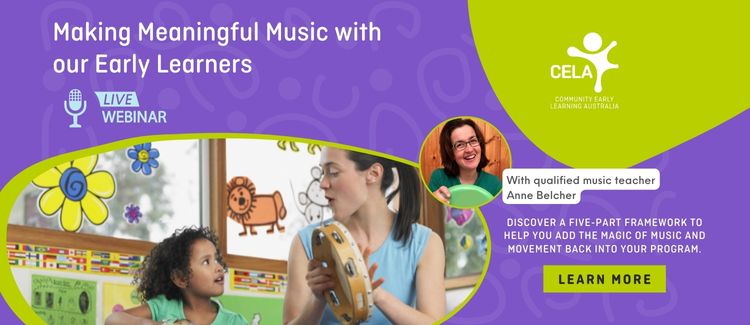The adoption of digital devices in many early education and care settings has led to a reduction in traditional pedagogical approaches such as fingerplays and reading aloud. As a result, children may be missing out on valuable learning and development opportunities.
What are fingerplays?
Fingerplays involve using fingers and hands to perform actions that accompany a song or poem. They are a fun and interactive way for young children to develop fine motor skills, hand-eye co-ordination and language skills. Fingerplays can be done with or without music and involve simple, repetitive movements that are easy for young children to learn and remember.
How fingerplays can benefit young children's development
“I use fingerplays quite often—particularly when working with toddlers,” says Early Childhood Teacher Meg Anastasi.
“Simple fingerplays like ‘open shut them’ allow for continued movement while sitting within a more structured learning environment, which in turn helps to support school readiness skills such as concentration. They also provide a great way to gain attention at the start of group time.”
Meg believes that they are also a useful tool to assess children’s ability to follow movement patterns or instructions.
The first time I introduce a fingerplay I take a lot of time to explain what I’m doing with my hands, as these movements can often be challenging for younger children (i.e. weaving fingers from both hands together). When running a group time, I observe who may be getting a little ‘lost’. This is much harder to do when reading a story.
Fingerplays can benefit young children's development in several ways. Here are some of the key benefits:
-
Enhancing fine motor skills: The intricate finger movements can help develop fine motor skills, which are essential for writing, drawing, and other activities that require hand-eye coordination.
-
Promoting language development: Fingerplays often involve singing or reciting rhymes, which can help children develop language skills such as vocabulary, pronunciation, and rhythm.
-
Improving memory and concentration: These activities involve repetition and require children to remember the lyrics and movements, which can help improve memory and concentration.
-
Encouraging socialisation: Fingerplays are often done in a group setting, which can help children learn to take turns, cooperate, and interact with others.
Fingerplays you can start using today
There are countless fingerplays that parents, caregivers, and educators can use to support young children's development. Here are some examples:

Members: Log in to download our new printable resource featuring five great fingerplays with lyrics and movements
How we can introduce fingerplays in an early education setting
“Any time that educators are singing or reading stories, fingerplays can be embedded with children—they’ll likely know some of these songs already from shows like Playschool,” says Meg, who offers the following tips:
-
Use visual aids such as pictures or posters to help children follow along with the fingerplay.
-
Encourage participation by having children take turns leading the fingerplay.
-
Make it fun by using props or instruments to accompany the fingerplay.
Teaching nursery rhymes using Key Word Sign
Creating an inclusive early learning service that supports all children to participate is crucial to children’s well-being. Studies have shown that teaching sign language has many benefits for all children1.
There are plenty of nursery rhymes that can be taught using Key Word Sign (KWS). KWS involves using signs or gestures to accompany the key words in a spoken sentence or phrase to support children and adults with communication difficulties to understand and get their message across to others. KWS is not a sign language, but it borrows the signs from the sign language of the country it is used in. In Australia this is Auslan.
"By teaching children to sing and sign nursery rhymes and other favourite songs, we can support nonverbal participation for all children," says CELA early education specialist Jannelle Gallagher. "This way, all children can participate, irrespective of ability. Signing makes it possible for children to 'sing' with their hands."
Nursery Rhymes to Sing, See and Sign, created by Scope Australia, introduces Key Word Sign and picture based communication aids in a fun and easy way. Find out more via this handout from Scope Australia.
Download The Turtle Song worksheet showing keys signs with song lyrics and a picture song board.
Summary
Fingerplays are a fun and interactive way to support young children's development. They provide numerous benefits, including enhancing fine motor skills, promoting language development, improving memory and concentration, and encouraging socialisation. Consider introducing nursery rhymes using KWS, which promotes many of the benefits of fingerplays as well as fostering a more inclusive communication environment.
 References
References
1. Daniels, M. (1996). Seeing language: The effect over time of sign language on vocabulary development in early childhood education. Child Study Journal, 26, 193-208.
CELA professional development relating to this topic

FIND OUT MORE
About CELA
Community Early Learning Australia is a not for profit organisation with a focus on amplifying the value of early learning for every child across Australia - representing our members and uniting our sector as a force for quality education and care.